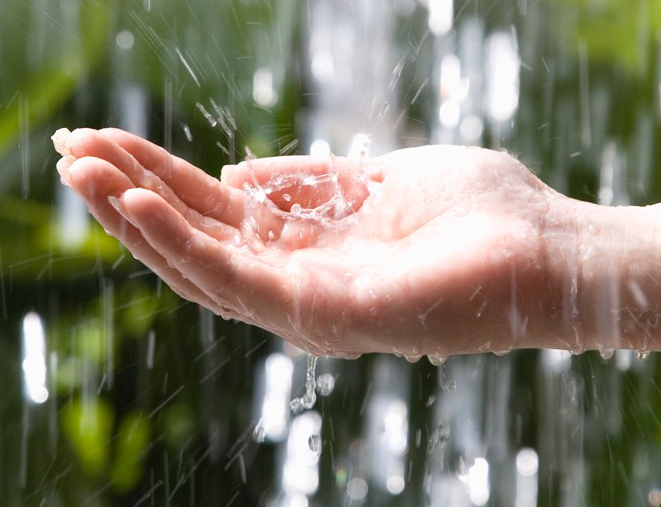Sustainability and wellness have always been important at Sloan, and the company is constantly seeking ways to improve performance in these areas. Patrick Boyle, Sloan’s Director of Corporate Sustainability, joins us today to share the company’s most important initiatives.
One of Sloan’s most important sustainability measures dates back more than 100 years. “Our manufacturing processes involves taking a solid brass sand casting and machining it down,” says Boyle. “All the scrap leftover material is collected and sent back to a foundry to be melted back down into another brass sand casting and it comes back to us to be machined down again. It’s a circular economy that’s been going on at Sloan since day one.”
Zero Landfill—the Most Environmentally Sustainable Way
More than ever before, people want to know the environmental impact of what they eat, the products they buy, and where they work. That’s why so many architects, designers, and facility owners rely on our transparency reports and appreciate our carbon offset program.
People may not think as much about landfills as a sustainability issue. But we do. We’re currently implementing a zero landfill initiative at our Franklin Park, Illinois headquarters, with plans to extend this program to our other facilities soon.
Boyle explains, “’Zero landfill’ means you're diverting everything that comes in your front door, so it does not end up in a landfill. This requires you either reuse, recycle, upcycle, or donate those materials. It sounds simple enough, but a lot of work is required to make this come to fruition.”
It’s not easy because Sloan doesn’t just want to divert all our waste materials from landfills—we want to do it in the most environmentally sustainable way possible.
“Materials diverted from landfills can end up in a waste-to-energy facility, which takes your waste and burns it, converting it to energy that’s added to the grid,” Boyle explains. “That creates greenhouse gas emissions—but we’re also working to reduce our greenhouse gas emissions and get to zero carbon over the next few decades. So that’s not an optimal solution for us.”
Helping Buildings Meet the WELL Standard
Many organizations trust Sloan to help them create healthy, efficient, carbon- and cost-saving buildings that earn LEED certification. These days, however, businesses are realizing that sustainability and wellness go hand-in-hand. That’s why we’ve made the WELL Standard a priority for our customers and own organization.
“LEED looks at how a building impacts the environment,” says Boyle. “WELL looks at how a building impacts the health of its occupants.”
The WELL Standard has been gaining popularity for years, but Boyle says, “the acceleration of the WELL Building Standard with COVID-19 has skyrocketed. There are more people focusing on how buildings impact their tenants than ever before.”
To see how we’re helping organizations work toward WELL certification, you can visit:
- Our Wellness page, which offers ample information on hygiene and touch-free restroom technology along with case studies, webinars, CEUs, and a wealth of other resources.
- Our WELL Building Standard Calculator, which helps you quickly evaluate the WELL credits available with any Sloan product, from flushometers to faucets to urinals and water closets.
Boyle points out that meeting the WELL Standard criteria—or making sure your building is healthy for all its occupants—requires the project team to look at material transparency, hygiene support, contact reduction and material safety when selecting products for that project. “Do the products specified provide material transparency? Sloan offers a wide variety of products with third party verified health product declarations. Our sensor soap dispensers, faucets, flushometers, HEPA hand driers and lavatories will help project teams earn valuable WELL points to elevate your project to that next certification level. And every Sloan sensor faucet meets the WELL restricted lead precondition. So, there are a lot of different ways Sloan can help.”
Why Stewardship is So Important
One more recent initiative to note: Sloan’s Franklin Park operation has just received certification in the Alliance for Water Stewardship Standard.
Boyle says, “It's a pretty intense, detailed criteria to certify to. It doesn’t just look at water consumption and impact within our property line, but it goes beyond that to evaluate how we impact water use and quality within our entire watershed. It's a much more holistic look at water stewardship.”
Environmental stewardship is an idea that’s important to more and more young professionals these days—which makes it doubly important to Sloan.
“There are various studies that have shown that younger professionals really want to work for a company that is doing right for their communities and the environment,” says Boyle. “They're looking at companies that have made these promises and set these goals to be more sustainable—to be a good corporate steward.”
As sustainability becomes more important to workers, Sloan is dedicated to helping architects, designers, and engineers make it a top priority in their projects.
“They’re the ones who work directly with building owners, so they’re the ones relaying this information about how important it is to reduce their buildings’ impact on the environment.”
Want ideas for making your next 2022 project healthier and more sustainable? Contact Sloan!
Stay Up to Date
Sign up for the Sloan blog to receive information on the latest trends in commercial building, technology advancements and product updates. It's the leading source of industry news for architects, designers, engineers and contractors.
